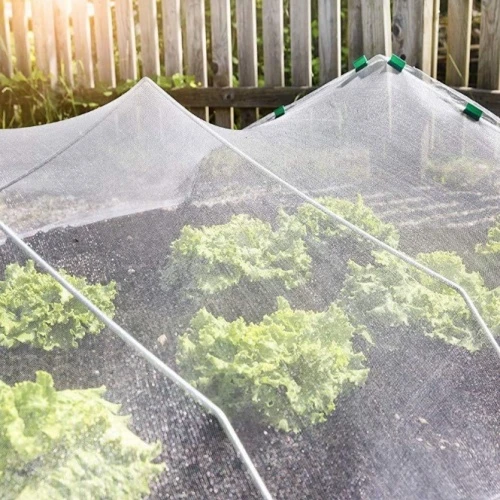-
 Afrikaans
Afrikaans -
 Albanian
Albanian -
 Amharic
Amharic -
 Arabic
Arabic -
 Armenian
Armenian -
 Azerbaijani
Azerbaijani -
 Basque
Basque -
 Belarusian
Belarusian -
 Bengali
Bengali -
 Bosnian
Bosnian -
 Bulgarian
Bulgarian -
 Catalan
Catalan -
 Cebuano
Cebuano -
 China
China -
 Corsican
Corsican -
 Croatian
Croatian -
 Czech
Czech -
 Danish
Danish -
 Dutch
Dutch -
 English
English -
 Esperanto
Esperanto -
 Estonian
Estonian -
 Finnish
Finnish -
 French
French -
 Frisian
Frisian -
 Galician
Galician -
 Georgian
Georgian -
 German
German -
 Greek
Greek -
 Gujarati
Gujarati -
 Haitian Creole
Haitian Creole -
 hausa
hausa -
 hawaiian
hawaiian -
 Hebrew
Hebrew -
 Hindi
Hindi -
 Miao
Miao -
 Hungarian
Hungarian -
 Icelandic
Icelandic -
 igbo
igbo -
 Indonesian
Indonesian -
 irish
irish -
 Italian
Italian -
 Japanese
Japanese -
 Javanese
Javanese -
 Kannada
Kannada -
 kazakh
kazakh -
 Khmer
Khmer -
 Rwandese
Rwandese -
 Korean
Korean -
 Kurdish
Kurdish -
 Kyrgyz
Kyrgyz -
 Lao
Lao -
 Latin
Latin -
 Latvian
Latvian -
 Lithuanian
Lithuanian -
 Luxembourgish
Luxembourgish -
 Macedonian
Macedonian -
 Malgashi
Malgashi -
 Malay
Malay -
 Malayalam
Malayalam -
 Maltese
Maltese -
 Maori
Maori -
 Marathi
Marathi -
 Mongolian
Mongolian -
 Myanmar
Myanmar -
 Nepali
Nepali -
 Norwegian
Norwegian -
 Norwegian
Norwegian -
 Occitan
Occitan -
 Pashto
Pashto -
 Persian
Persian -
 Polish
Polish -
 Portuguese
Portuguese -
 Punjabi
Punjabi -
 Romanian
Romanian -
 Russian
Russian -
 Samoan
Samoan -
 Scottish Gaelic
Scottish Gaelic -
 Serbian
Serbian -
 Sesotho
Sesotho -
 Shona
Shona -
 Sindhi
Sindhi -
 Sinhala
Sinhala -
 Slovak
Slovak -
 Slovenian
Slovenian -
 Somali
Somali -
 Spanish
Spanish -
 Sundanese
Sundanese -
 Swahili
Swahili -
 Swedish
Swedish -
 Tagalog
Tagalog -
 Tajik
Tajik -
 Tamil
Tamil -
 Tatar
Tatar -
 Telugu
Telugu -
 Thai
Thai -
 Turkish
Turkish -
 Turkmen
Turkmen -
 Ukrainian
Ukrainian -
 Urdu
Urdu -
 Uighur
Uighur -
 Uzbek
Uzbek -
 Vietnamese
Vietnamese -
 Welsh
Welsh -
 Bantu
Bantu -
 Yiddish
Yiddish -
 Yoruba
Yoruba -
 Zulu
Zulu
vine netting
The Benefits and Applications of Vine Netting
In the world of gardening and agriculture, the choice of support systems can significantly impact the growth and health of climbing plants. Among various options available, vine netting stands out as an effective and versatile solution for those looking to cultivate vines, vegetables, and flowering plants. This article delves into the benefits and applications of vine netting, describing how it can enhance the gardening experience while promoting sustainable practices.
Vine netting, typically made from durable synthetic materials like polypropylene or nylon, consists of a grid-like structure that provides support for climbing plants. Its design allows plants to attach themselves easily while providing ample airflow and sunlight, which are crucial for photosynthesis. As a result, vine netting promotes healthier growth, leading to higher yields and more robust plants.
One of the primary advantages of using vine netting is its ability to maximize space. In urban gardens, where land is often limited, vertical gardening has become a popular solution. Vine netting enables gardeners to utilize vertical space effectively by allowing plants to grow upwards instead of spreading outwards. This not only optimizes available sunlight but also helps to reduce competition for nutrients and moisture in the soil. For instance, gardeners can grow tomatoes, cucumbers, and climbing beans on trellises covered with vine netting, creating a lush, productive garden without taking up excessive ground space.
vine netting

Moreover, vine netting aids in improving air circulation around the plants. Good air flow is essential to reduce the risk of fungal diseases and pests, which can thrive in dense, low-lying vegetation. By training plants to grow along the netting, they receive better exposure to wind and light, which in turn contributes to their overall health. This aspect is particularly beneficial in humid regions, where stagnant air can lead to issues such as powdery mildew.
Vine netting is also an ideal solution for supporting flowering plants such as clematis or climbing roses. This allows homeowners and landscape designers to create stunning vertical displays that add beauty and charm to gardens, patios, and outdoor spaces. The netting can be easily installed on fences, walls, or standalone trellises, allowing for customized garden designs. The aesthetic appeal of climbing plants entwined with vine netting can greatly enhance the overall ambiance, making outdoor spaces more inviting.
In addition to its aesthetic and practical benefits, vine netting is a sustainable choice for eco-conscious gardeners. Many netting options are reusable and environmentally friendly, reducing the need for single-use materials. Additionally, using vine netting can help produce organic fruits and vegetables by minimizing the use of herbicides and pesticides. The growth support it provides encourages healthy, resilient plants that can better withstand pests and diseases.
In conclusion, vine netting is an invaluable tool for gardeners and agriculturalists alike. Its ability to maximize growing space, improve air circulation, support flowering plants, and promote sustainable practices makes it an essential consideration for anyone looking to enhance their gardening efforts. Whether you're a beginner or an experienced gardener, incorporating vine netting into your plant care routine can lead to healthier, more productive, and visually stunning gardens. As you explore the world of gardening, consider the potential of vine netting to transform your gardening experience.
-
Shipping Plastic Bags for Every NeedNewsJul.24,2025
-
Safety Netting: Your Shield in ConstructionNewsJul.24,2025
-
Plastic Mesh Netting for Everyday UseNewsJul.24,2025
-
Nylon Netting for Every UseNewsJul.24,2025
-
Mesh Breeder Box for Fish TanksNewsJul.24,2025
-
Expanded Steel Mesh Offers Durable VersatilityNewsJul.24,2025











